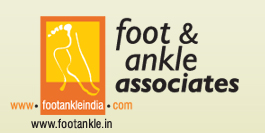

 |

| Clubfoot |
Parents know immediately if their newborn has
a clubfoot. Some will even know before the child is born, if an
ultrasound was done during the pregnancy. A clubfoot occurs in approximately
one in every 1000 births, with boys slightly outnumbering girls.
One or both feet may be affected. |
 |
| Symptoms |
The appearance is unmistakable: the foot is
turned to the side and it may even appear that the top of the foot
is where the bottom should be. The involved foot, calf and leg are
smaller and shorter than the normal side. It is not a painful condition.
But if it is not treated, clubfoot will lead to significant discomfort
and disability by the teenage years |
| Risk Factors / Prevention |
Doctors still aren't certain why it happens,
though it can occur in some families with previous clubfeet. In
fact, your baby's chance of having a clubfoot is twice as likely
if you, your spouse or your other children also have it. Less severe
infant foot problems are common and are often incorrectly called
clubfoot. |
| Treatment Options |
Stretching and casting.
Treatment should begin right away to have the best chance for a
successful outcome without the need for surgery. Over the past 5
to 10 years, more and more success has been achieved in correcting
clubfeet without the need for surgery. A particular method of stretching
and casting, known as the Ponseti method, has been responsible for
this. With this method, the doctor changes the cast every week for
several weeks, always stretching the foot toward the correct position.
The heel cord is then released followed by one more cast for three
weeks. Once the foot has been corrected, the infant must wear a
brace at night for two years to maintain the correction. This has
been extremely effective but requires the parents to actively participate
in the daily care by applying the braces. Without the parents' participation,
the clubfoot will almost certainly recur. That's because the muscles
around the foot can pull it back into the abnormal position. The goal of this, and any treatment program, is to make your newborn's clubfoot (or feet) functional, painless and stable by the time he or she is ready to walk. (Note: Anytime your baby wears a cast, watch for changes in skin color or temperature that may indicate problems with circulation.) |
| Treatment Options: Surgical |
Surgery if needed.
On occasion, stretching, casting and bracing are not enough to correct
your baby's clubfoot. Surgery may be needed to adjust the tendons,
ligaments and joints in the foot/ankle. Usually done at 9 to12 months
of age, surgery corrects all of your baby's clubfoot deformities
at the same time. After surgery, a cast holds the clubfoot still
while it heals. It's still possible for the muscles in your child's
foot to try to return to the clubfoot position, and special shoes
or braces will likely be used for up to a year or more after surgery.
Surgery will likely result in a stiffer foot than nonsurgical treatment,
particularly as the years pass by. Without any treatment, your child's clubfoot will result in severe functional disability. With treatment, your child should have a nearly normal foot. He or she can run and play without pain and wear normal shoes. The corrected clubfoot will still not be perfect, however. You should expect it to stay 1 to 1 1/2 sizes smaller and somewhat less mobile than the normal foot. The calf muscles in your child's clubfoot leg will also stay smaller. |
| June 2004 |
| ©
Foot & Ankle Associates. All Rights Reserved. |
Website Powered
by : Sterling Softwares |